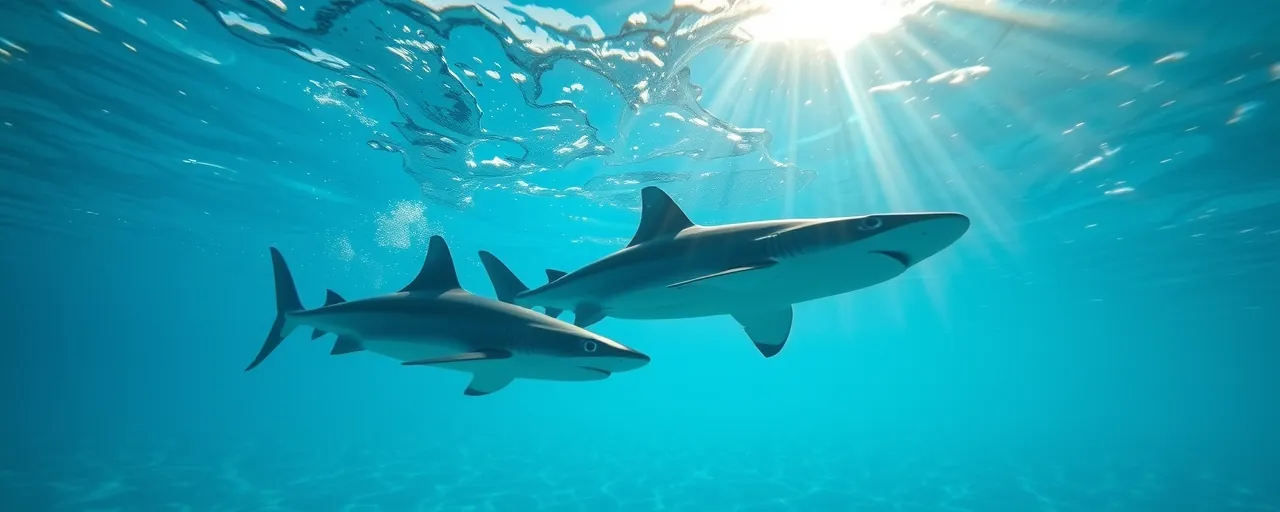Guarding Alabama’s Gulf Coast
Alabama’s Gulf Coast, with its sugar-white sands and turquoise waters, pulls in millions of visitors yearly. Yet the growing presence of sharks near shorelines has sparked concern. In May 2025, Governor Kay Ivey signed HB437, dubbed Lulu’s Law after a young shark attack survivor. This legislation rolled out a wireless alert system in Baldwin and Mobile counties, sending rapid notifications to beachgoers’ phones when sharks are spotted. The goal is clear: keep swimmers safe while ensuring the coast remains a thriving destination.
The law’s signing, attended by survivor Lulu Gribbin, highlighted a shared commitment to safety. Operated by the Alabama Department of Conservation and Natural Resources, the system has triggered 12 alerts since its launch, clearing 1,200 swimmers from the water with no reported shark injuries in 2025. Compared to three minor attacks the previous year, this marks progress. Still, the system prompts broader questions about harmonizing human activity with nature’s unpredictability.
Sharks on the Move
Warmer seas are reshaping marine life. Record-high ocean temperatures in 2024 have nudged species like blacktip sharks about 100 miles northward over the past decade. Declining fish populations and expanding dead zones push these predators closer to beaches, with a 15% spike in shark sightings across the southeastern U.S. Alabama’s alert system responds to this reality, but it also reflects a larger issue: environmental changes are blurring boundaries between human and wildlife habitats.
Since the 1980s, climate-driven shifts have intensified, building on earlier disruptions from overfishing and coastal sprawl. Wetlands loss has squeezed wildlife into tighter spaces, boosting encounters like shark sightings and a 30% rise in marine mammal strandings. These patterns show why tools like HB437 are needed, while also pointing to the challenge of managing ecosystems under growing strain.
Tech-Powered Protection
Beach safety has come a long way since the lifeguard flags of the early 1900s. Modern tools, from AI-based rip current predictors to drones reaching incidents in three minutes, are redefining the field. HB437’s alert system, inspired by Amber Alerts, delivers precise warnings to phones, helping officials act fast without shutting down entire beaches. For coastal communities, it’s a practical way to manage risks while keeping tourism, a $200 billion national industry, on track.
Not everyone agrees technology alone is enough. Some environmental groups advocate restoring natural barriers, like mangroves, to ease wildlife pressures. Others stress educating visitors on shark behavior, such as avoiding peak feeding times. These views suggest HB437 is one piece of a bigger strategy, where innovation must pair with conservation and awareness to truly protect beachgoers.
Tourism vs. Nature
Alabama’s Gulf Coast thrives on tourism, but growth has a cost. Shoreline erosion affects 40% of U.S. coasts, and mangrove losses hit 30% in some regions, amplifying risks for both people and wildlife. HB437’s targeted alerts aim to safeguard visitors without chilling the local economy. So far, no evidence suggests alerts have scared tourists away, but businesses remain cautious about the system’s long-term impact.
Other states are tackling similar issues. Florida’s new marine buoys track algal blooms, while New York funds erosion fixes with $50 million in grants. Advocates for sustainable tourism propose ecotourism zones and visitor caps to lessen environmental strain. These efforts show that safety tools like HB437 need to align with policies that protect the natural assets drawing crowds in the first place.
Looking Ahead
Lulu’s Law has proven effective, with zero shark injuries in 2025, but its reach is limited to two counties. Expanding the system or linking it to alerts for other hazards, like rip currents, could broaden its impact. Meanwhile, environmental pressures demand more than quick fixes. Restoring coastal ecosystems, curbing unchecked development, and investing in marine research could address the root causes of wildlife shifts.
For families splashing in the Gulf, the alert system offers confidence to enjoy the water. For policymakers, it’s a call to balance safety, tourism, and ecology. Alabama’s beaches are a treasure, and preserving them means blending smart technology with long-term care for the natural world. The work is just beginning, but the path is taking shape.
